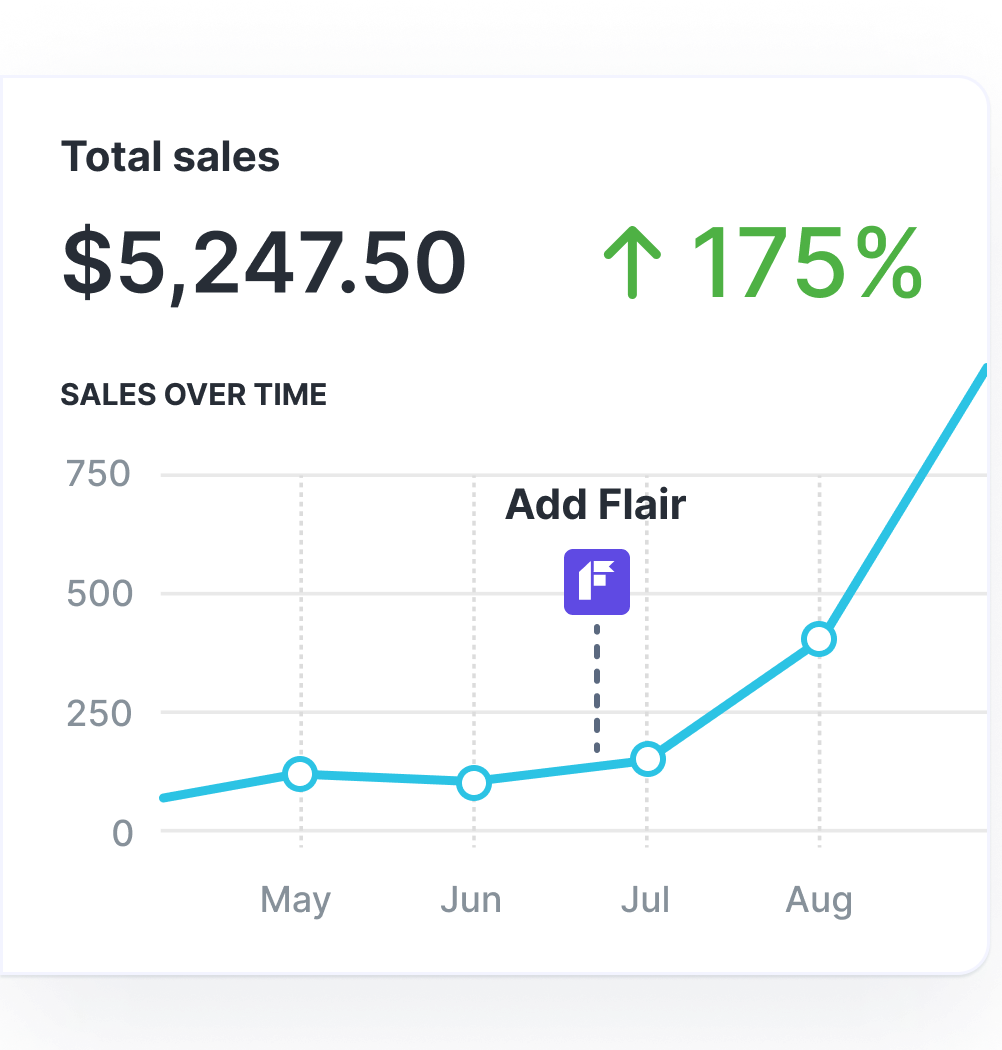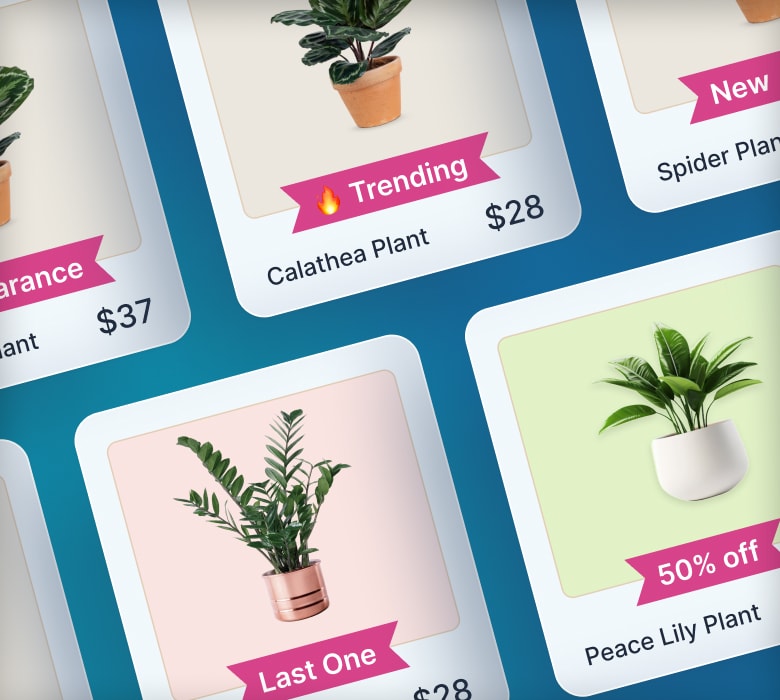Shopify Pros and Cons: Unbiased 2025 Insights

Shopify is one of the world’s biggest e-commerce platforms, powering 4.6 million online stores and generating $444 billion of total global economic activity.
But that doesn’t mean it’s perfect.
While there are plenty of things we love about Shopify, there are a few we’d like to change, too.
To help you decide if it’s the right platform for your e-commerce store, we've rounded up the 20 biggest pros and cons of using Shopify. But first, let’s get some definitions out the way:
What is Shopify?

Shopify is a platform that allows business owners to build and launch their own online stores.
Once your store is live, Shopify also provides tools to manage your inventory, receive payments, and process sales.
As a cloud-based platform, Shopify can be accessed from anywhere, giving users the flexibility to run an e-commerce store from any place with an internet connection.
Shopify offers three “main” plans, plus an entry-level package for social selling and a higher-tier plan for enterprise-level retailers, giving it the flexibility to serve businesses of all sizes.
How Does Shopify Work?
Getting started with Shopify works like this:
- Choose a payment plan. As we’ve already noted, Shopify offers a range of paid plans, ranging in price from $29 – $2,000+ per month. You don’t want to pay more than necessary, but you also don’t want to miss out on any features that are essential to your business, so choose wisely! Find Shopify’s prices and plans here.
- Buy a domain name from Shopify or connect an existing domain purchased from a third party like GoDaddy or Namecheap.
- Design a logo for your store. If you’re not sure where to start, try using Shopify’s free logo maker, or a graphic design tool like Canva.
- Choose a theme. The Shopify Theme Store features 170+ professionally designed themes, including 12 that are totally free. Choose a theme that aligns with your industry, offers all the necessary features, and supports a large enough product catalog.
- Import products to your store. You can upload them in seconds via CSV.
- Optimize your store by adding products to collections, updating the site navigation, and writing engaging product descriptions.
- Promote your store. Once it’s live, you can start promoting your store via the marketing channel(s) of your choice.
Pro tip: To learn more about launching and running a successful Shopify store, check out our related guides: How Does Shopify Work and E-commerce Marketing Strategies for Success.
Pros and Cons of Shopify: At a Glance
| Shopify pros | Shopify cons |
| Supports a wide range of payment processors | If you want to quit Shopify, it’s hard to migrate to a different platform |
| Easy to use, even for users with no coding skills | Transaction fees for third-party payment providers are pretty high |
| Excellent learning resources and live chat/email support | Shopify Payments doesn’t charge transaction fees, but it’s only available in 23 countries |
| Offers a large choice of themes, some of which are free (and almost all are mobile-friendly) | Some customizations (like custom discount functionality) are only available to Shopify Pro customers |
| 8,000+ apps allow for extensive store customization | Huge leap in price and features from Shopify Advanced ($299/month) and Shopify Plus ($2,000/month) |
| No need to manage or pay for external hosting | Costs add up fast if you’re paying for a Shopify plan plus multiple apps |
| Detailed but user-friendly analytics helps you optimize store performance | Lack of built-in support for key B2B features outside of the enterprise plan, Shopify Plus |
| Multiple built-in marketing channels and audience growth tools (onsite forms, email marketing, segmentation) | Basic blogging functionality; WooCommerce could be a better choice if you do a lot of content marketing |
| Supports multiple sales channels, including Amazon, eBay, and Facebook | Shopify’s free email marketing tool is extremely limited |
Pros of Shopify
First up, here are the things we love most about Shopify; the stuff that we think it does at least as well as other e-commerce platforms, if not better:
Multiple Payment Processors

Payment processors give you a convenient and secure way to capture payments from your customers.
Shopify offers a lot of them. In the US alone, it supports approximately 100 payment methods, including Afterpay, FasterPay, PayPal Express Checkout, and its own solution, Shopify Payments.
While payment processing might not be the most exciting thing about running an e-commerce business, it’s vital you choose the right provider(s) for your store. For instance, some solutions — like PayPal — only work in certain geographic areas, so you need to find a payment processor that works for your business and audience.
Easy to Use
One of our favorite things about Shopify is its user-friendly nature.
With its wealth of high-quality themes, the platform makes it quick and easy to build and launch an e-commerce store without requiring any advanced technical skills.
Although we recommend putting some serious thought into designing your store, it’s totally possible to build a basic Shopify website in under a week.
For more advice, check out our quick-start guide to selling on Shopify.
24/7 Support

Shopify merchants can access a vast library of educational resources via the Shopify Help Center, covering everything from starting a store to setting up a payment provider to adding new sales channels.
Or you can reach out to like-minded store owners through the Shopify Community (chances are many of them will have encountered — and overcome — whatever challenge you’re facing).
And if all else fails, you can reach out to Shopify via live chat or email.
Variety of Themes

As we’ve already noted, Shopify Themes make it easy to design a beautiful, user-friendly e-commerce store (without requiring any coding knowledge on your part).
There are dozens of options available through the Shopify Themes store, segmented by industry, catalog size, and features. And while most of those themes carry a cost, Shopify currently offers 12 free themes, which provide a solid foundation to get started and can be customized with apps and plugins (more on them later).
Can’t find what you’re looking for via Shopify’s store? There are thousands of third-party themes available from sites like Theme Forest, Envato, and Creative Market.
Apps and Plugins

There are lots of moving parts to running a successful e-commerce business, like:
- Shipping
- Finding products
- Inventory management
- Marketing
- Customer support
Fortunately, you can get help with all those things — and much more besides — through the Shopify App Store, which offers 8,000+ apps for all the different ways you want to customize and enhance your store.
Many of those apps are developed by third parties, but Shopify still takes the time to review them against 100 checkpoints before allowing them to be sold on the app store.
Hosting and Security
Shopify is a full hosted solution, which means all Shopify stores are hosted on the platform’s servers — so they don’t have to pay for external hosting.
And that’s not the only benefit.
The platform offers uncapped bandwidth on all price plans. So whereas some hosting providers charge more to cover high-traffic periods, Shopify positively welcomes it (after all, more traffic = more sales!).
You also get instant software updates and PCI DSS Level 1-compliant security, giving customers the confidence that their payment information will be kept safe.
Customization

Sure, Shopify themes look great out of the box. But your store is unique, so you’re not satisfied with a one-size-fits-all solution.
Don’t worry, because Shopify’s website editor makes it super simple to customize your store by adding new imagery, changing fonts and colors, tweaking the positioning of various website elements, and much more besides.
You can even change your Shopify theme down the line if you want a new look or additional functionality not supported by your existing theme.
Uncheckered Growth
Shopify offers a whole suite of free business tools to help e-commerce store owners hit their growth goals, from a logo maker and business name generator to purchase order and shipping label templates.
Marketing and Discounts

As well as helping you handle the day-to-day essentials of running your store, Shopify gives you tools to reach and engage new audiences, including:
- Onsite forms
- Email marketing
- Segmentation
- Marketing automation
Once you’ve connected with a potential customer, you can convert them through a well-time discount code offering free shipping, a percentage or cash amount off their next purchase, or a buy X, get Y incentive.
Find out more in our complete guide to Shopify discounts.
Multichannel Selling
Importantly, Shopify store owners aren’t limited to converting customers through their own websites: they can also sell via Amazon, eBay, Facebook, Instagram, Pinterest, and various other platforms.
And the more channels you leverage, the more opportunities you have to reach (and convert) customers on a platform they trust.
Powerful Analytics

With its advanced built-in analytics and reporting functionality, Shopify gives store owners the data and insights to understand how customers interact with their websites, helping them make better-informed strategic decisions.
You can even benchmark your store against competing Shopify sites, as determined by order volumes, product types, and target market.
Mobile Responsiveness

The vast majority of Shopify themes are mobile responsive, meaning they adapt to the device on which they’re being viewed. That’s a big deal given 79% of Shopify traffic comes from mobile.
Cons of Shopify
Shopify serves a wide range of customers, from tiny startups to multinational e-commerce behemoths. And you know what they say: you can’t please all the people all the time.
Inevitably, there are a few areas in which Shopify falls short. As far as we’re concerned, here are the platform’s biggest weaknesses…
Difficult Exit
Shopify doesn’t exactly make it easy to leave (but then again, what SaaS platform does?).
If you ever decide to shut down your store and migrate to a different e-commerce platform, you’ll have to export all your data, then import everything into your new platform, which can take a lot of time and effort. Plus you’ll obviously lose any functionality enabled by Shopify-specific apps and customizations.
Frankly, it’s hard work, so it’s important you make sure Shopify is definitely the right platform for you before signing up.
Transaction Fees
With Shopify Payments, you avoid third-party transaction fees on orders processed through:
- Shopify Payments
- Shop Pay
- Shop Pay Installments
- Paypal Express
Pro Tip: Shop Pay may require a credit check. Find out more in our companion guide: Does Shop Pay check credit?.
And you also escape fees on manual payments (like cash, bank transfers, and cash on delivery).
Unfortunately, Shopify Payments isn’t available everywhere, and it can’t be used by stores selling certain prohibited products. If you can’t — or don’t want to — use it, you’ll have to pay fees on every transaction, eating into your margins.
Customization Limitations
Customization on Shopify is a blessing and a curse.
On one hand, the platform’s themes allow for simple, code-free aesthetic tweaks.
But on the flip side, there are limitations to exactly what — and to what extent — you can customize. Eventually, expect to run up against some issue that requires knowledge of Liquid, Shopify’s own coding language.
And bear in mind that some customizations — like checkout customizations and custom discount functionality — are limited to the enterprise-level Shopify Plus plan.
Add-On Costs
Although Shopify offers a ton of standard features to get your store up and running, it doesn’t do everything out of the box. And while the App Store is great for adding missing functionality, costs can quickly add up.
Not only that, but some features — such as customizing your checkout for upsells — are only available to Shopify Plus customers paying $2,000+ per month.
Charges for Specific Payment Gateway
One of Shopify’s biggest strengths is its wide range of payment processors.
But if you don’t want — or more likely, aren’t eligible — to use Shopify Payments as your payment gateway, you’ll have to pay an additional fee of 1% per transaction, cutting into your margins and increasing your costs.
This is a big issue, because Shopify Payments is only (currently) available in 23 countries. What’s more, several business and product types are prohibited from using Shopify Payments, including:
- Financial products and services
- Cannabis and related products
- So-called “adult” products or services containing sexually explicit content
- Gambling products or services
- Medical products
Click here for a full list of high-level categories for prohibited products and services.
Lack of B2B Features
We truly believe Shopify is the best choice of platform for B2C e-commerce stores.
But if you’re a B2B business, it’s less good.
Sure, it can still handle the basics of selling physical products or services to another business. But it lacks native support for key B2B features like tiered pricing and purchase orders (unless you’re prepared to pay for Shopify Plus).
That means you’ll need to install (and pay for) a third-party app, leading to yet more costs.
Email Marketing
Shopify does provide a free app for sending email campaigns, but it’s very limited and built for simple use cases.

So if you need an advanced email marketing option, you’ll need to pay for another solution.
Content Marketing

Content marketing is one of the most cost-effective ways to generate traffic to your store.
Unfortunately, Shopify’s blogging functionality is pretty basic, especially when compared to a dedicated content management system like WordPress.
So if content is going to be a big part of your marketing strategy, you might want to consider WooCommerce, an open-source e-commerce software plugin for WordPress sites.
Conclusion
Fact is, there’s no such thing as the perfect e-commerce platform.
Shopify has a lot going for it — but there are plenty of limitations and drawbacks, too. The same can be said of alternative platforms like BigCommerce, Magento, and WooCommerce.
However, on balance, if you’re looking for a quick and easy way to launch an e-commerce store (and you’re not an expert coder), we think Shopify is hard to beat.
Ready to build your store? Check out our top tips on how to increase your Shopify conversion rate!

Grow Your Shopify Sales by over 175% with Flair
-
Increase sales using product badges and sales banners
-
Maximize conversions with scarcity, urgency and countdown timers
-
Automate promotions with targeted rules and scheduling
Other FAQs
Is It Worth Getting Shopify?
Whether Shopify is “worth it” depends on your goals for building and running an e-commerce store.
There are definitely cheaper ways to build a website.
But if you’re looking for a fast and convenient way to launch, manage, and scale a stylish-looking, user-friendly online store (without requiring advanced coding skills), Shopify is hard to beat.
What Are Some Cons About Shopify Payments?
The only real downside to Shopify Payments is that not everyone can use it.
Shopify Payments is currently available in 23 countries — mostly in Europe and North America. If you’re not based in one of those locations, you can’t sign up for Shopify Payments.
It’s also not available to stores selling certain prohibited products and services, such as cannabis products, financial services, and “adult” content.




